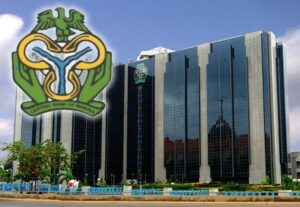Bank lending rate hits 29.13% in December 2022
The maximum lending rate for Nigerian banks rose to 29.13 per cent in December 2022 from 28.14 per cent recorded in the previous month and 27.58 per cent in the corresponding period of 2021.
Lending rates increased on the back of the multiple rate hikes by the Central Bank of Nigeria in 2022. Specifically, the CBN raised the benchmark interest rate by a collective 500 basis points to 16.5 per cent, representing its highest rate in 21 years.
According to the money and credit statistics from CBN, the maximum lending rate averaged 28.09 per cent in 2022 compared to 28.06 per cent recorded in the previous year. Meanwhile, the prime lending rate stood at 13.85 per cent from 13.17 per cent recorded in the preceding month.
The one-month deposit rate increased to 8.15 per cent in December 2022 from 7.38 per cent recorded in November.
3-month deposit rate stood at 8.79 per cent in the review period, an increase from 8.45 perc ent recorded in the previous month.
The 6-month and 12-month deposit rates stood at 8.68 per cent and 8.22 per cent respectively in December 2022.
The savings deposit rate climbed to 4.13 per cent in December, the highest since April 2017.
Despite the interest rate increase, Nigeria’s private sector’s credit rose by N6.61 trillion in 2022 to close the year at N41.8 trillion, the highest on record.
Compared to the previous year, net loans increased by 23.65 per cent compared to N5.04 trillion recorded in 2021, and a 47.7 per cent increase from 2020.
In the same vein, credit to the government increased significantly, with N11.33 trillion in new credit being acquired in the period under review, representing a 92 per cent surge from 2021’s loan figure.
The CBN maintained an aggressive hawkish stance in the second half of 2022 to curb inflation, and mop-up excess liquidity by discouraging loans in the economy.
However, businesses in need of cash have acquired more loans despite the high-interest rate regime.
By implication, this could affect the ability of businesses to repay the loans. An alternative will be to pass the cost to the consumers, which could further exacerbate the inflationary pressure in the country.
Banks and lenders stand to gain from the high-interest rate environment adopted by the CBN.
Considering that a large chunk of the revenue generated by commercial banks is from interest income, which is a function of interest rates, banks could be set to earn more from their loans to customers. However, high-interest rate portends the possibility of non-performing loans.
A cursory view of the financial statements of top publicly quoted banks on the Nigerian Exchange showed that interest income increased by 30 per cent year-on-year in Q3 2022, earning a whopping sum of N1.15 trillion compared to N888.36 billion recorded in the corresponding period of 2021.
For the nine months, interest income rose by 24.6 per cent to N3.14 trillion from N2.52 trillion earned in the same period of the same year. These numbers seem set to increase further when the banks begin to release their full-year results.




